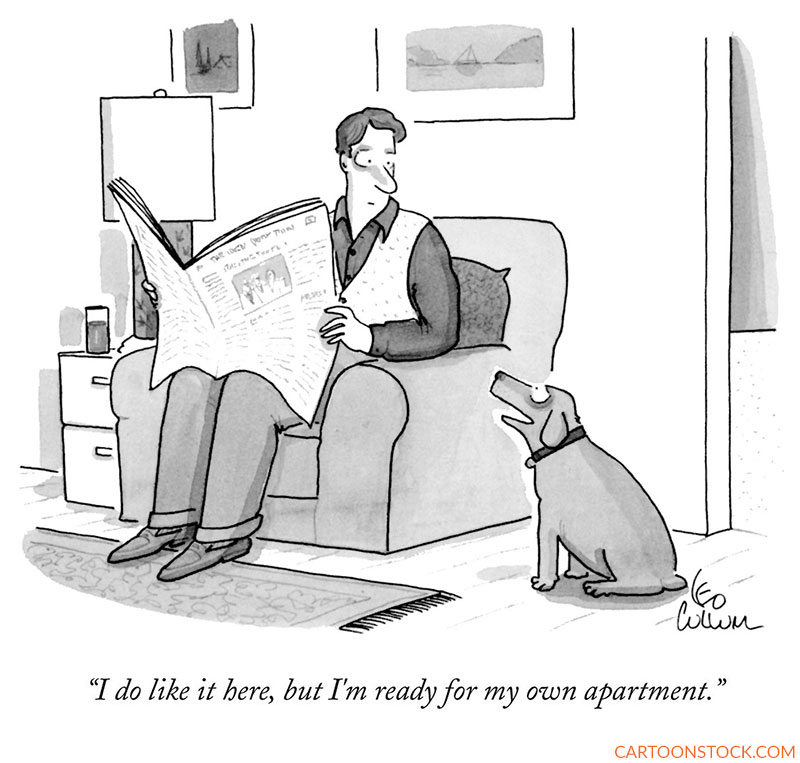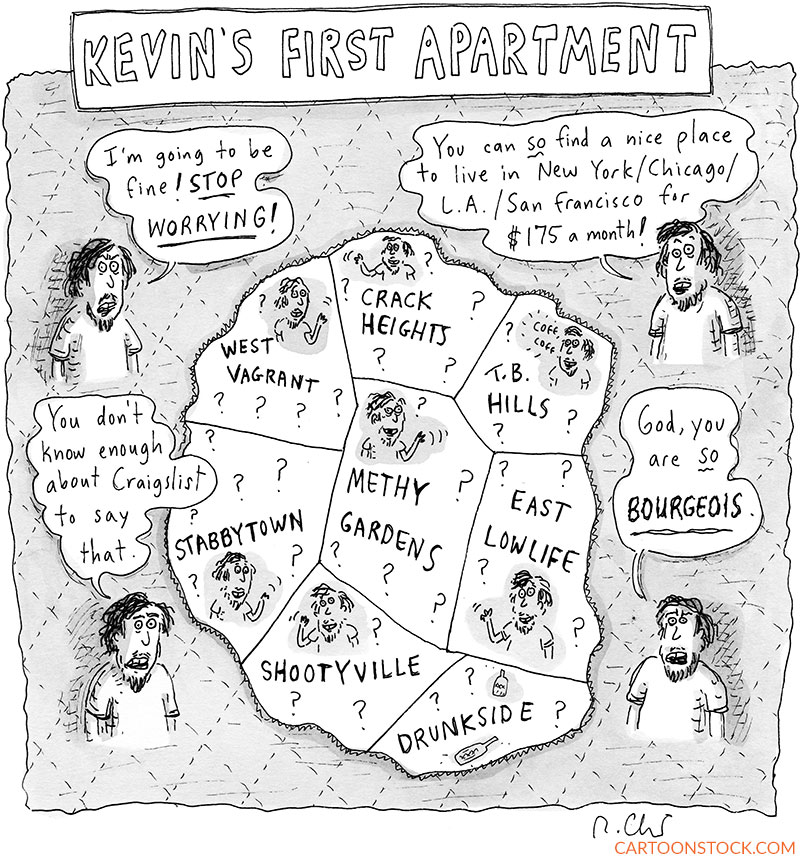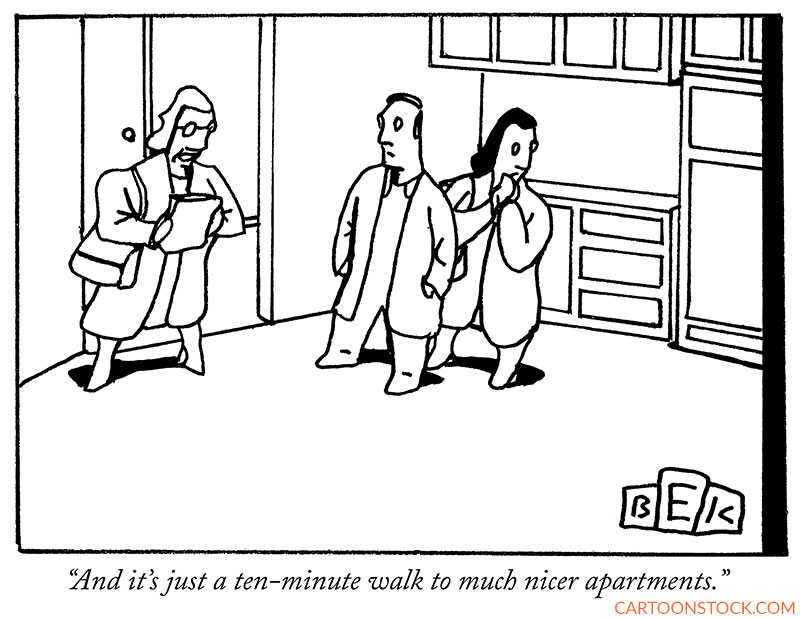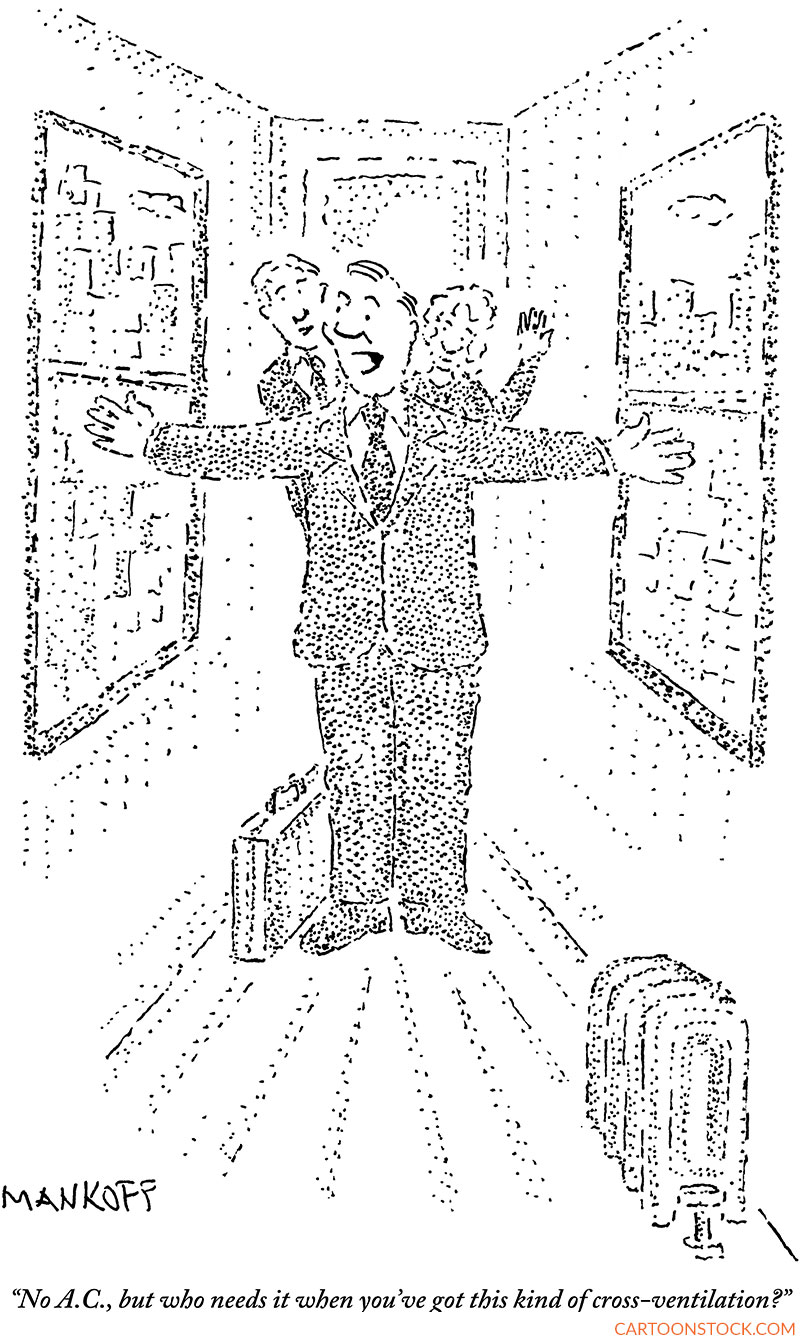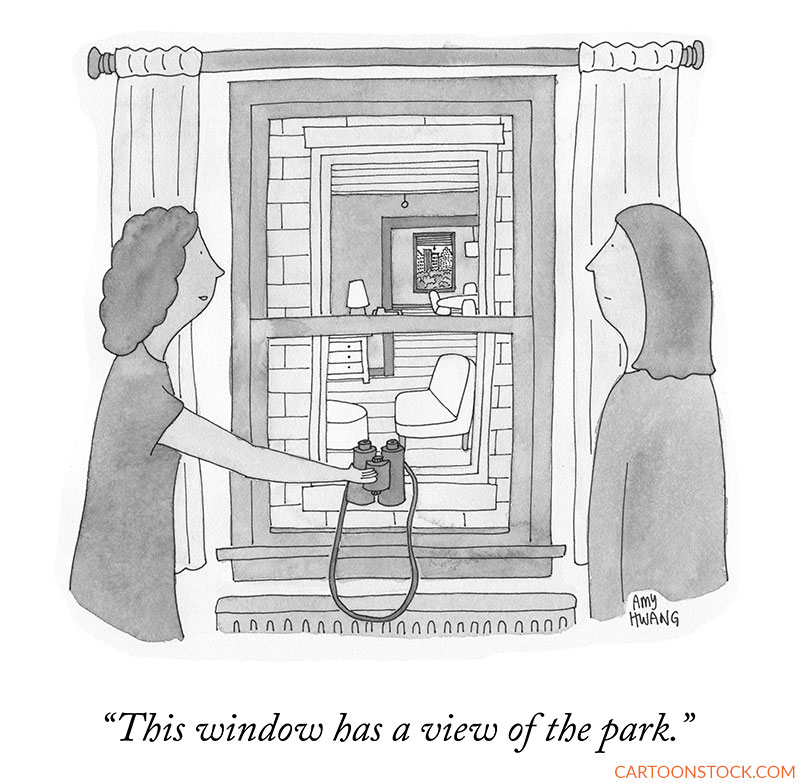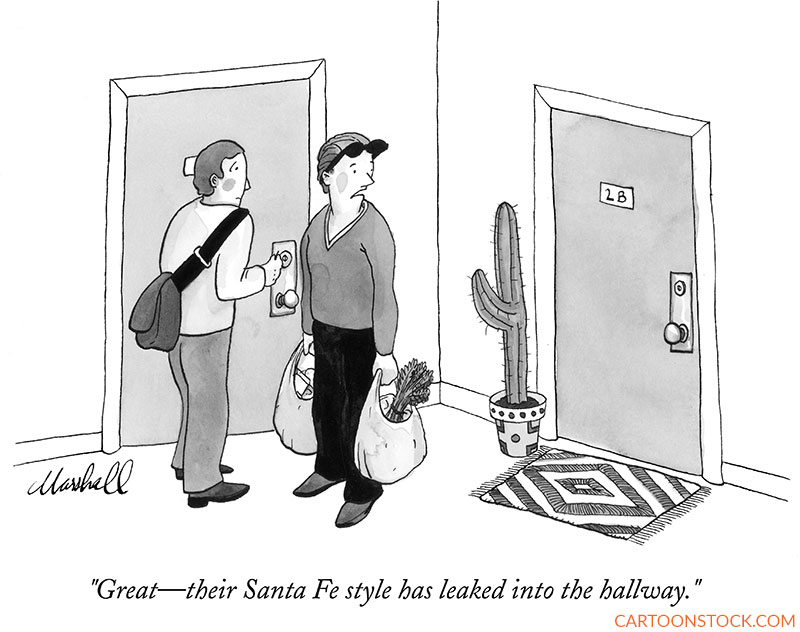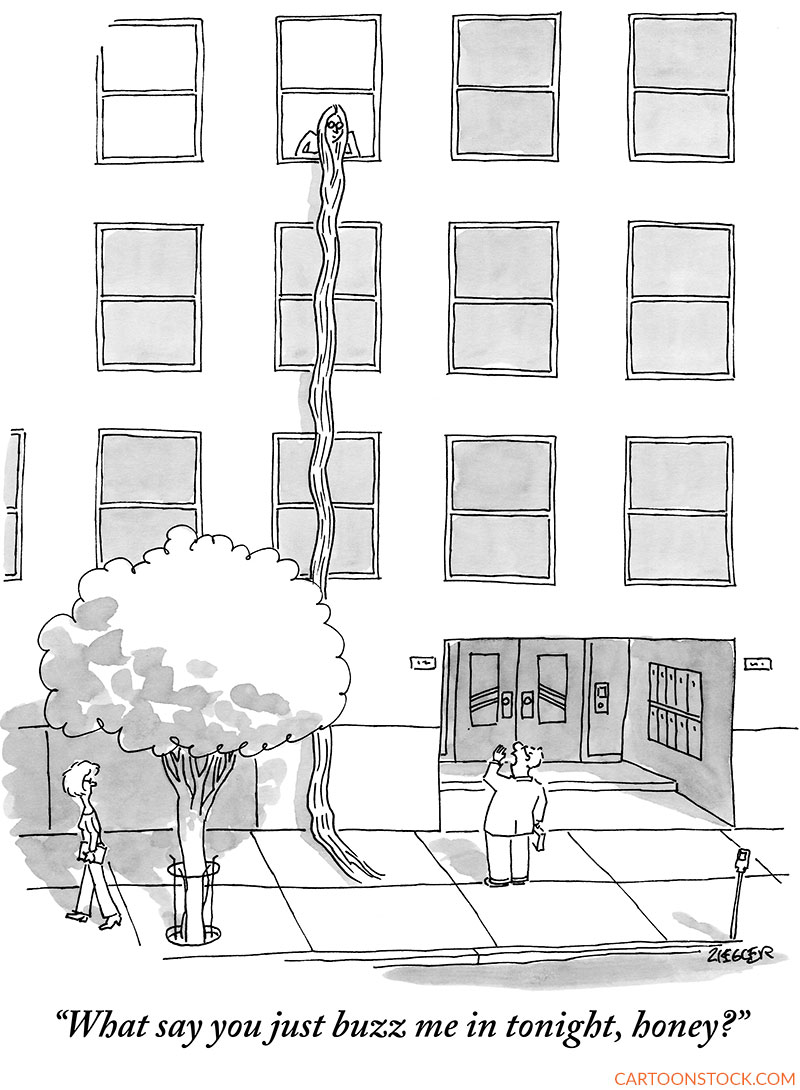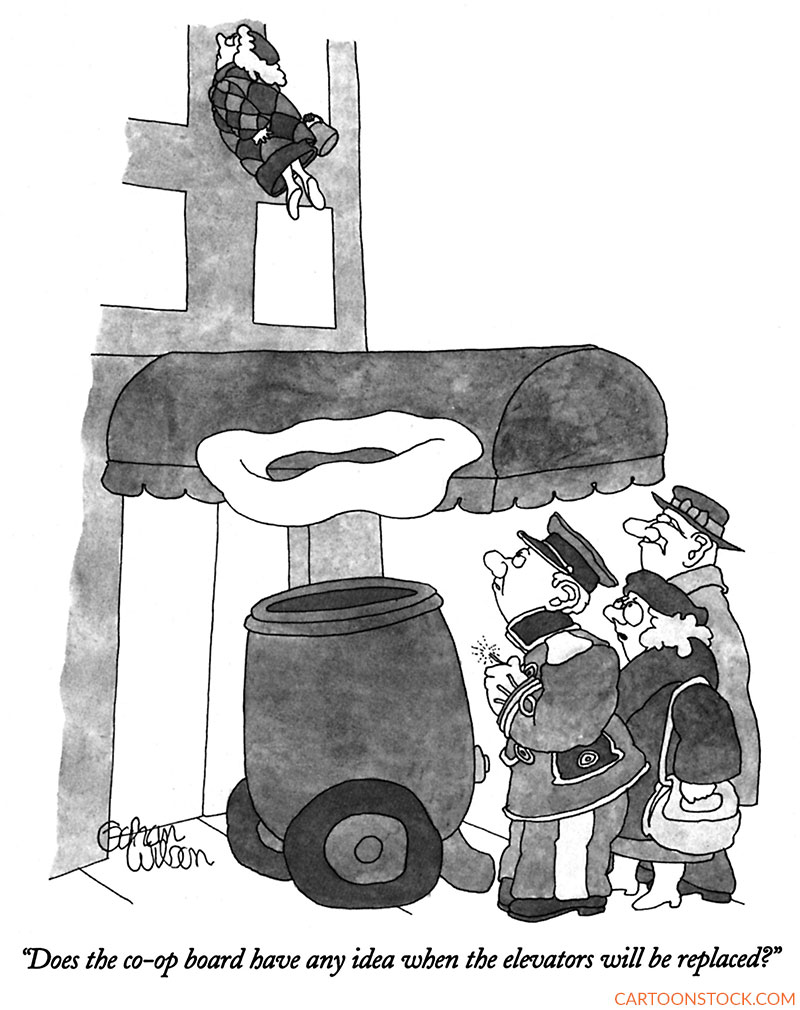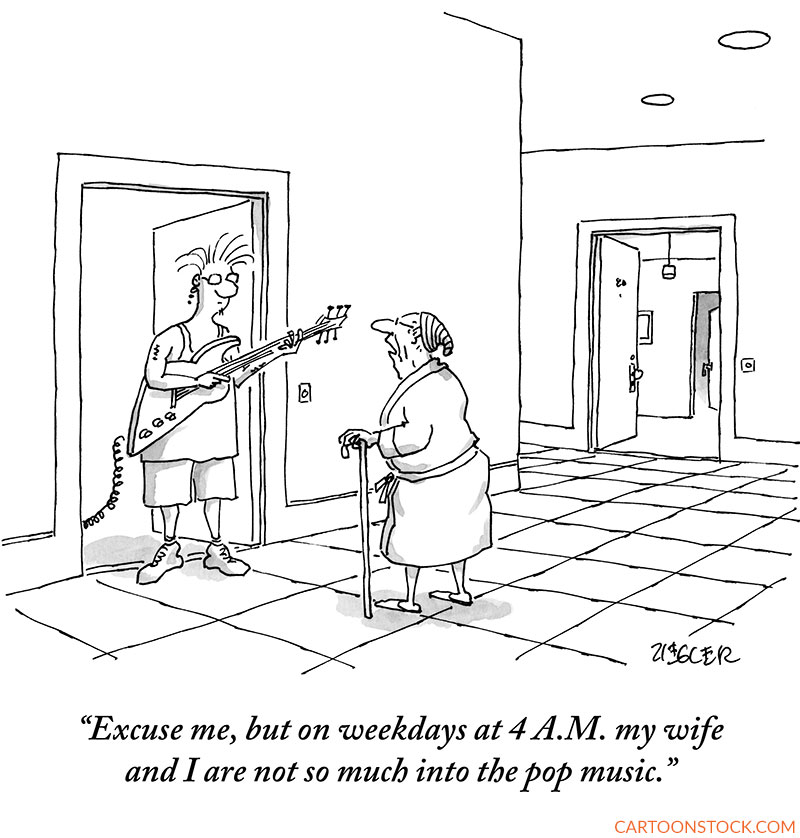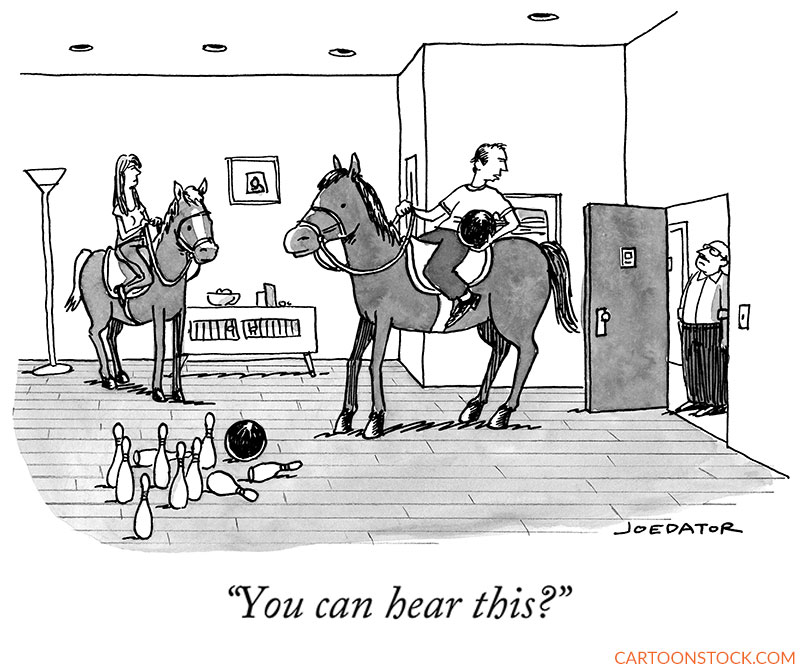
Cartoon critics Phil Witte and Rex Hesner look behind the gags to debate what makes a cartoon tick. This week our intrepid critics take a look at apartment living.
One of life’s major passages is moving into an apartment of one’s own. Whether shabby or snazzy, that first apartment is often the launching pad to adulthood. The freedom is exhilarating until the realization hits: you are living close to many people … perhaps too close.
Legendary cartoonist Leo Cullum, with his impeccable draftsmanship, captures that first impulse to leave the nest. The details in his brushwork are evident on every surface, including the front page of Dad’s newspaper.
A parent can only imagine the worst when it comes to an offspring’s proposed new neighborhood. Danger lurks around every corner; no area is safe enough. We suspect our favorite cartoonist mom, Roz Chast, visualized parental fears that might have come from personal experience. The echoes of a son’s protestations surround her amorphous map of freeform anxiety—an elegant paean to the subconscious.
With expectations sky-high, apartment hunting is elating … for about an hour. Then it becomes an endless grind of drab interiors that always lack a key attribute or two. Bruce Eric Kaplan distills this sense of continual disappointment into a single panel. The couple does not look terribly pleased with what they’ve seen so far.
Real estate agents are unfailingly optimistic about their inventory. Cramped becomes “cozy,” and battered becomes “character.” Bob Mankoff, master of the pointillist drawing style, shows a salesman in the throes of turning negatives into positives.
The prospect of stunning views entices prospective renters in droves; however, the reality is often disappointing. “Peek-a-boo river view” means you have to crane your neck out the window to catch a glimpse of blue. “Filtered view” amounts to a squinting through a scrim of leaves to see anything. Some views are even more preposterous, as Amy Hwang imagines in her only-in-New York scenario. This composition challenges the viewer’s depth-of-view capabilities.
The tastes of apartment dwellers sometimes expand beyond their interiors. Although typically confined to modest displays of individuality, some residents opt for all-out declarations of their identity, as Marshall Hopkins shows for apartment 2B. Count on sneering hipsters to deliver scathing commentary.
One of the most enduring clichés in the cartooning world is Rapunzel and her rapturous hair. Typically set in a tall tower, the golden-tressed sorcerer’s daughter has been moved to a more prosaic location on the fourth floor. Leave it to Jack Ziegler to create the perfect caption to this startling image.
Apartment buildings are complex edifices with many moving parts; unfortunately, the parts don’t always work. When the elevator’s out, the upper floors suffer. Ingenuity is the order of the day in Gahan Wilson’s imaginative cartoon of overcoming adversity. With an awning and doorman, we’re guessing this ritzy apartment building is nestled firmly on the Upper East Side.
Noise is the single most common complaint when living atop one another in an apartment building. Neighbors generally tolerate reasonable noise levels except when it comes to loud music. The question is: grin and bear it, or march down the hall and complain. Jack Ziegler favors the latter approach in his generational exchange of views about music.
The downstairs neighbor is always the most vulnerable to noise from the apartment overhead: footsteps, vacuuming, dropped dishes, bagpipe practice. Occasionally, things get out of hand with a loud argument or rowdy party. Joe Dator goes off the rails with his depiction of noisy upstairs neighbors. We note these city dwellers like the finer things in life as their apartment features recessed lighting, hardwood floors, and generous ceiling heights.
The quickest way to lodge a noise complaint is to thump a broom handle against the ceiling. We close with John O’Brien’s masterful noise complaint cartoon that needs no words to capture the futility of noises beyond our control. The apartment dwellers below seem unperturbed by the events above, or perhaps they believe their upstairs neighbor is in a better position to communicate his annoyance.


